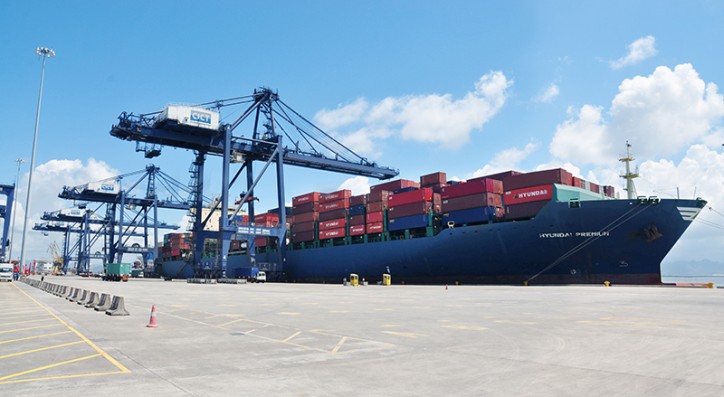The Cai Lan International Container Terminal (CICT) in Ha Long city, northern Quang Ninh province, has recently launched a new international maritime shipping route, called ACS, which links six Asian countries and will be conducted under a cooperation arrangement between two major global shipping lines: Hyundai Merchant Marine (HMM) and Gold Star Line (GSL).
Using vessels of 5,000 TEUs (twenty-foot equivalent unit), the ACS route will be plied once a week and connect India, Malaysia, Singapore, Vietnam, South Korea, and China.

CICT’s use of large vessels will help clients and shipping companies save on both costs and time. Rather than receiving cargo at Hai Phong Port and then transporting it by ferry or truck to other areas, containers will now be transported directly from the other countries to CICT. CICT also welcomes large vessels on other routes.
It is the first port capable of berthing large vessels of 4000-5000 TEUs, according to Mr. Nguyen Van Cong, Deputy Minister of Transport. “This is a very important beginning,” he said. “Using large vessels will reduce transportation costs and time and improve the competitiveness of imports and exports. I believe the arrival of large vessels at CICT will help socioeconomic development not only in Quang Ninh but also in all northern provinces.”
Mr. Nguyen Duc Long, Chairman of the Quang Ninh Provincial People’s Committee, said the province is committed to creating the most favorable conditions in administrative tasks for enterprises using CICT’s port.
At the launch ceremony, CICT welcomed the container vessel Hyundai Premium (registered in Liberia), with a capacity of 5,023 TEUs, and had previously welcomed HMM’s 5,000-TEU container vessel, on May 31.
CICT is the only port capable of berthing large vessels of 40,000 to 50,000 DWT in Vietnam’s north.
Preparations for the new route began in 2007 at a cost of almost VND300 billion ($1.3 million) to upgrade the inbound mouth of the port, which was previously capable of accommodating vessels of only 25,000 DWT and which met just 60 percent of the port’s designed capacity.
Source: Vinalines